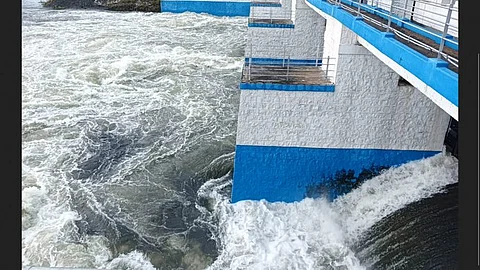

One key lesson the Tamil Nadu government learnt following the 2015 Chennai floods was with regard to water release at the Chembarambakkam Lake. With a total capacity of 3645.00 mcft and a full tank of 85.4 ft, Chembarambakkam Lake is one of the biggest reservoirs near Chennai. In 2015, the ‘indiscriminate discharge of water from Chembarambakkam Lake’ burdened the Adyar River, leading to floods in Chennai, found a Comptroller and Auditor General of India (CAG) report.
In 2023, the lessons from the 2015 floods were put to practice. By November 30, Chennai and its neighbouring districts received 618 mm of rainfall since October 2023. Chembarambakkam Lake was 89% full with storage capacity at 3256 mcft on November 30. The next day, the India Meteorological Department issued a red alert for December 4 in Thiruvallur district and an orange alert for Chennai, Chengalpattu, and Kancheepuram.
The Water Resources Department ordered water to be released from Chembarambakkam, increasing the discharge from 200 cusecs to 10,000 cusecs. This brought down water levels from 89% on November 30 to 83% on December 1. It dropped to 80% on December 2, and came down further to 76% on December 3, the day before Cyclone Michaung brought widespread rainfall to Chennai and other districts. Chennai received about 530mm of rainfall over two days.
With heavy rainfall in the catchment areas and high inflows, the Chembarambakkam Lake reached 92% of its storage capacity on December 5 and to a maximum level of 95% on December 6 (3473 mcft). So, there was a 19 percentage point increase in storage capacity in just two days.
If water had not been gradually released from before December 1, the surplus water brought by the heavy rains on December 3 and 4 would have caused a massive flood. The outflow could have even gone up to 1 lakh cusecs, which would have flooded several areas along the Adyar River.. The effective and timely flood management of the Chembarambakkam Lake helped prevent a deluge similar to the 2015 floods.